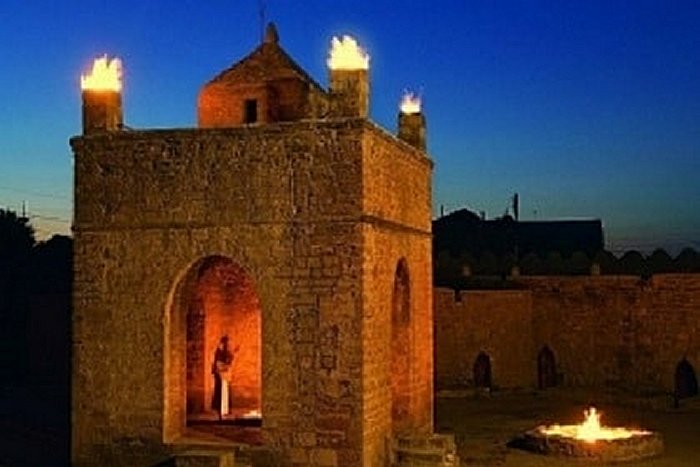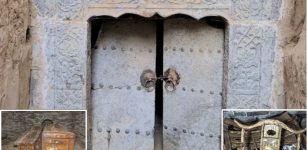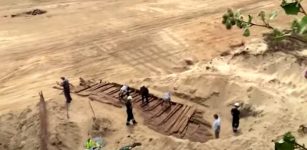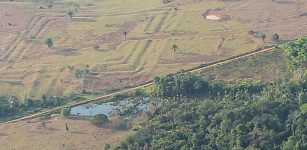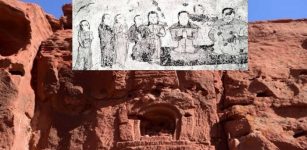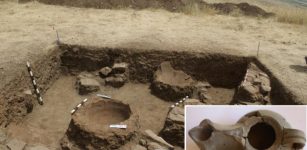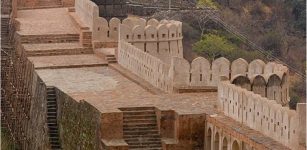The Third Greatest Fire Temple That Existed In Ancient Iran’s Sassanid Age – Unearthed
Conny Waters - AncientPages.com - Archaeologists have discovered the ruins of what they believe was one of the greatest fire temples in Iran during the Sassanid age, named after the House of Sasan. The time of the Sassanids lasted for over four centuries, from 224 to 651 CE. It was, therefore, the longest-lived Persian imperial dynasty.
Fire Temple - a religious building of zarathustrans, found mainly in Iran, India, Turkey and Azerbaijan. Image source. (this image is not related to the recent discovery of the fire temple)
“We have probably discovered the third greatest fire temple that existed in ancient Iran,” ILNA quoted archaeologist Meysam Labbaf-Khaniki as saying on Wednesday.
It is now the fifth season of this important archaeological survey conducted in a valley near the village of Robat-e Sefid/Bazeh Hur, northeast Iran, and led by Labbaf-Khaniki.
“During this archaeological season, we have gathered considerable evidence such as engraved plasterwork and inscriptions that suggest the ruins are related to an important fire temple,” said the archaeologist, as cited by Tehran Times.
Inscriptions and their fragments that bear Pahlavi scripts should first be arranged and categorized till they could be read (and deciphered) by linguists and cultural heritage experts, he explained. These fresh discoveries are expected to open a new chapter in the history of Iranian arts during the Sassanid epoch, the archaeologist said.
Exquisite stuccoworks embellish capital columns that support the main hall of the fire temple, he said.
The temple of fire , which means ''the house of fire' is a religious building of zarathustrans, found mainly in Iran, India, Turkey and Azerbaijan. The cult of the sacred fire is the basis of Zoroastrianism. Fire is considerd a purifying force and is identified with truth and order (Asha) and associated with the amshaspands. There are three kinds of Holy fire: Atash dadgah, Atash adaran and Atash Behram, of which the latter being considered the most holy. The first altars of fire were most probably built in Persia, before the reign of the Achaemenids (730 BC - 330 BC), and were originally erected on artificial hills, without a roof.
Such altars are mentioned in the works of Herodotus and Strabo.
This was due to the belief that God cannot be locked in a room. Such a location could also have resulted from the imitation of the natural phenomenon known as eternal fires (burning natural natural gas outflows). The most spectacular flames reaching several tens of meters are created in this region by spontaneous combustion of gas eruptions from mud volcanoes.
The Zoroastrian place of worship is called fire temple because they perform their prayers in the presence of fire. In ancient Iran, the head of the family always kept the fire burning, so keeping the fire lit became a tradition. Keeping the flames lit was a divine symbol for worship in Iranian fire temples.
In the Zoroastrian fire temples, fire was not worshiped at all, but because of its dynamism, warmth, protection role, and the nature of transformation, it is commonly mentioned as aspects of divine power.
The conquest of Persia by the Muslims resulted in the destruction or conversion into mosques of most of the temples. Others were formed mainly in Parsi communities in India. In the 20th century, many destroyed fire temples were reconstructed.
The oldest surviving roofed fire temple is located in Iran, near Kuh-e Khwaja and dates back to the Seleucid period. This type of sacral building became widespread during the reign of the Sasanids.
The Sassanid age is an important historical period in the history of Iran. Under Sassanids, Persian architecture in addition to arts experienced a general renaissance. Architecture often took grandiose proportions such as palaces at Ctesiphon, Firuzabad, and Sarvestan which are amongst the highlights of the ensemble.
Sassanid archaeological designs typically represent a highly efficient system of land use and strategic utilization of natural topography in the creation of the earliest cultural centers of the Sassanid civilization.
Since 2014, archaeologist Meysam Labbaf-Khaniki has also participated in previous excavations conducted at the ancient site. In 2018, a joint Franco-Iranian mission was tasked to study the whole valley, its human occupations, its geomorphology, and its implication in the large territory of Khorasan Razavi province.
In 2018, an ensemble of Sassanian historical cities in southern Iran, titled “Sassanid Archaeological Landscape of Fars Region”, was named a UNESCO site. The ensemble is comprised of eight archaeological sites situated in three geographical parts of Firuzabad, Bishapur, and Sarvestan.
The World Heritage reflects the optimized utilization of natural topography and bears witness to the influence of Achaemenid and Parthian cultural traditions and of Roman art, which later had a significant impact on the architecture and artistic styles of the Islamic era.
Aside from architecture, crafts such as metalwork and gem-engraving grew highly sophisticated, yet scholarship was encouraged by the state. In those years, works from both the East and West were translated into Pahlavi, the language of the Sassanians.
Written by Conny Waters - AncientPages.com Staff Writer

